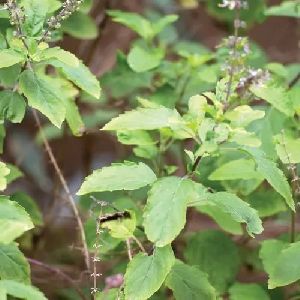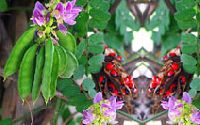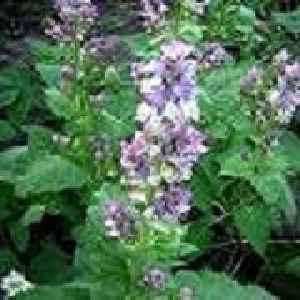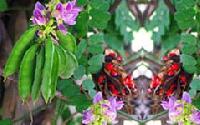
Mucuna Powder
Get Price Quote

Tulsi Plant
8 Per Piece
1000 Piece (MOQ)
Best Deals from Medicinal Herbal Plants

Pterocarpus marsupium
Get Price Quote

Marjoram
Get Price Quote
Best known as a culinary herb and an essential ingredient in French, Middle Eastern and prominently in Mediterranean cuisine, Marjoram isn't an unfamiliar herb to food lovers and in kitchen gardens. It is the world of fragrances where perfumers, as composers, to blend their fragrances work with numbers of materials and there marjoram, which is akin to oregano, makes its way into perfume ingredients.It is a perennial herbaceous plant, grown often as an annual because it does not survive well in wet and cold winters. It grows to an upright, compact bush about 20-40 cm in height, with a woody main stem and many softer branches. Leaves are oblong-ovate, soft, matte green with a sweet, spicy, pleasant smell. Flowers are small, whitish or purplish, arranged in terminal clusters. Seeds are minute, oval and dark brown. Crop is usually grown vegetatively through cuttings and can also be grown by seeds..Marjoram (Origanum majorana, syn. Majorana hortensis Moench, Majorana majorana (L.) H. Karst is a somewhat cold-sensitive perennial herb or undershrub with sweet pine and citrus flavors. In some Middle-Eastern countries, marjoram is synonymous with oregano, and there the names sweet marjoram and knotted marjoram are used to distinguish it from other plants of the genus Origanum.

Abrus Precatorius
Get Price Quote
The seeds of Abrus precatorius are much valued in native jewelry for their bright coloration. Apart from this it finds variety of uses in the form of traditional medicine. However, its seed contains a toxic element called Abrin, which is only harmful when swallowed.

clary sage
Get Price Quote
CLARY SAGE Salvia sclarea, clary or clary sage is a biennial or short-lived herbaceous perennial in the genus Salvia. It is native to the northern Mediterranean, along with some areas in north Africa and Central Asia.The plant has a lengthy history as a medicinal herb and is currently grown for its essential oil. S. sclarea reaches 3 to 4 ft (0.91 to 1.22 m) in height, with thick square stems that are covered in hairs.The leaves are approximately 1 ft (0.30 m) long at the base, 0.5 ft (0.15 m) long higher on the plant. The upper leaf surface is rugose and covered with glandular hairs.The flowers are in verticils with 2-6 flowers in each verticil and are held in large colorful bracts. That range in color from pale mauve to lilac or white to pink with a pink mark on the edge.The lilac or pale blue corolla is approximately 1 in (2.5 cm) with the lips held wide open. Clary seeds have a mucilaginous coat.Which is why some old herbals recommended placing a seed into the eye of someone with a foreign object in it so that it could adhere to the object and make it easy to remove.This practice is noted by Nicholas Culpeper in his Complete Herbal (1653) who referred to the plant as "clear-eye".The distilled essential oil is used widely in perfumes and as a muscatel flavoring for vermouths wines and liqueurs.It is also used in aromatherapy for relieving anxiety and fear, menstrual-related problems such as PMS and cramping and helping with insomnia.It is used as fragrance components and fixatives in soaps, detergents, cosmetics and perfumes.The oil is used extensively by the food and drink industry. Especially in the production of wines with a muscatel flavor.The young tops of Clary were used in soups and as pot herbs. It gives a new lift to omelets and was used to flavor jellies.The leaves were chopped into salads. Culpeper recommended a 17th century sage dish where the fresh leaves were first dipped in a batter of flour, eggs and a little milk fried in butter and served as a side dish.The flowers have an aromatic flavor and make a lovely contrast in salads. All sage flowers are edible after removing all greenery and stems.The main constituents of the oil are Linalyl Acetate , Linalool and Germacrene.Clary Sage Oil is one of the most important in a perfumers pallete. Excellent blending properties and forms good accords with Citrus and Herbal notes. And at the same time has very useful fixative properties.

Abrus Precatorius
Get Price Quote
medicinal properties : abortifacientanodyneaphrodisiacantimicrobialdiureticemeticexpectorantfebrifugehemostatlaxativepurgativerefrigerantsedativebenefits : sciaticastiffness of shoulder joints and paralysis,gonorrheajaundicehaemoglobinuric bilepromotes the growth of hair

Lemongrass
90 Per Kilogram

punch tulsi
Get Price Quote
punch tulsi, Stone, dentodoc dental cream, Liver Problem Treatment Services

Medicinal Plants
Get Price Quote
Medicinal Plants, White Oyster Mushroom, Aloe vera Plants, Tulsi

Tulsi Plant
Get Price Quote
Tulsi Plant

Aloe Vera
Get Price Quote
Aloe Vera, Bael, Lemon Grass, Medicinal herbs, Milk Thistle, Stevia

Mucuna Pruriens
Get Price Quote
Mucuna Pruriens, Cocodyma Herbal Seed, Caba seed, Virginia Herbal Seed